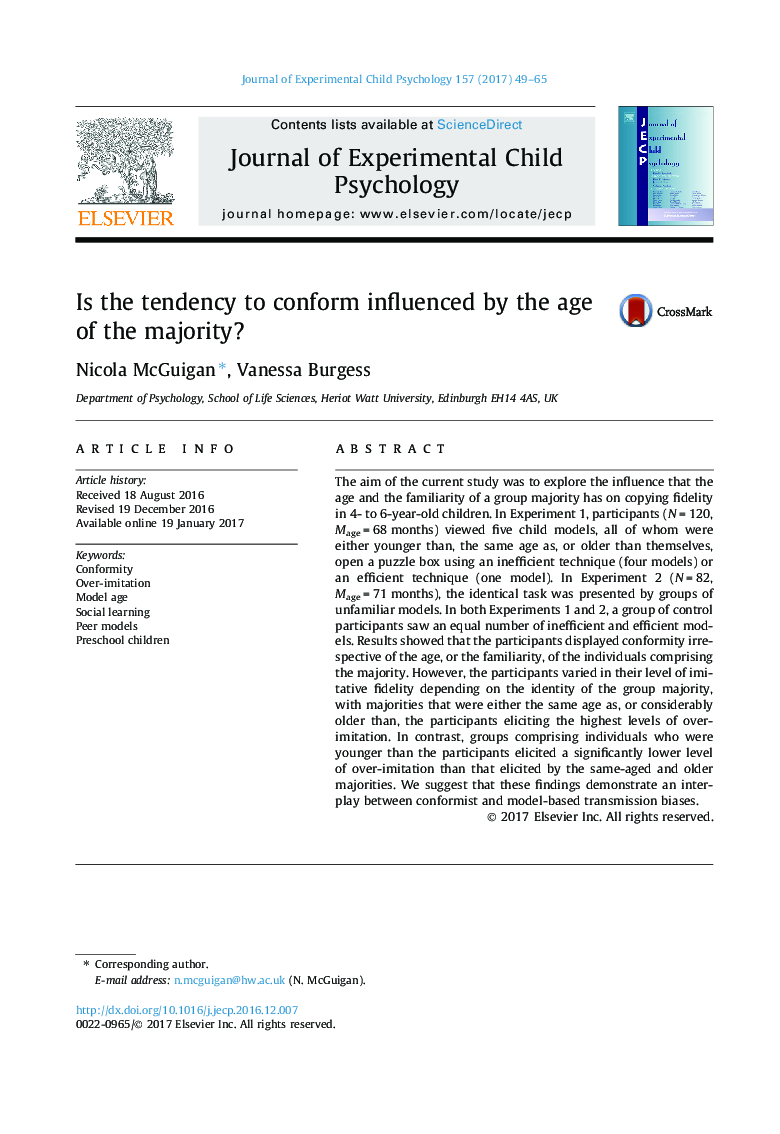| Article ID | Journal | Published Year | Pages | File Type |
|---|---|---|---|---|
| 5040045 | Journal of Experimental Child Psychology | 2017 | 17 Pages |
â¢The current study explores the influence of a group majority on action copying.â¢We systematically vary the age of the individuals comprising the majority.â¢Children readily copy majorities comprising same aged, and much older models.â¢Majorities younger than the children were also influential, but to a lesser degree.â¢Majorities influence copying fidelity, but this varies according to majority age.
The aim of the current study was to explore the influence that the age and the familiarity of a group majority has on copying fidelity in 4- to 6-year-old children. In Experiment 1, participants (N = 120, Mage = 68 months) viewed five child models, all of whom were either younger than, the same age as, or older than themselves, open a puzzle box using an inefficient technique (four models) or an efficient technique (one model). In Experiment 2 (N = 82, Mage = 71 months), the identical task was presented by groups of unfamiliar models. In both Experiments 1 and 2, a group of control participants saw an equal number of inefficient and efficient models. Results showed that the participants displayed conformity irrespective of the age, or the familiarity, of the individuals comprising the majority. However, the participants varied in their level of imitative fidelity depending on the identity of the group majority, with majorities that were either the same age as, or considerably older than, the participants eliciting the highest levels of over-imitation. In contrast, groups comprising individuals who were younger than the participants elicited a significantly lower level of over-imitation than that elicited by the same-aged and older majorities. We suggest that these findings demonstrate an interplay between conformist and model-based transmission biases.
